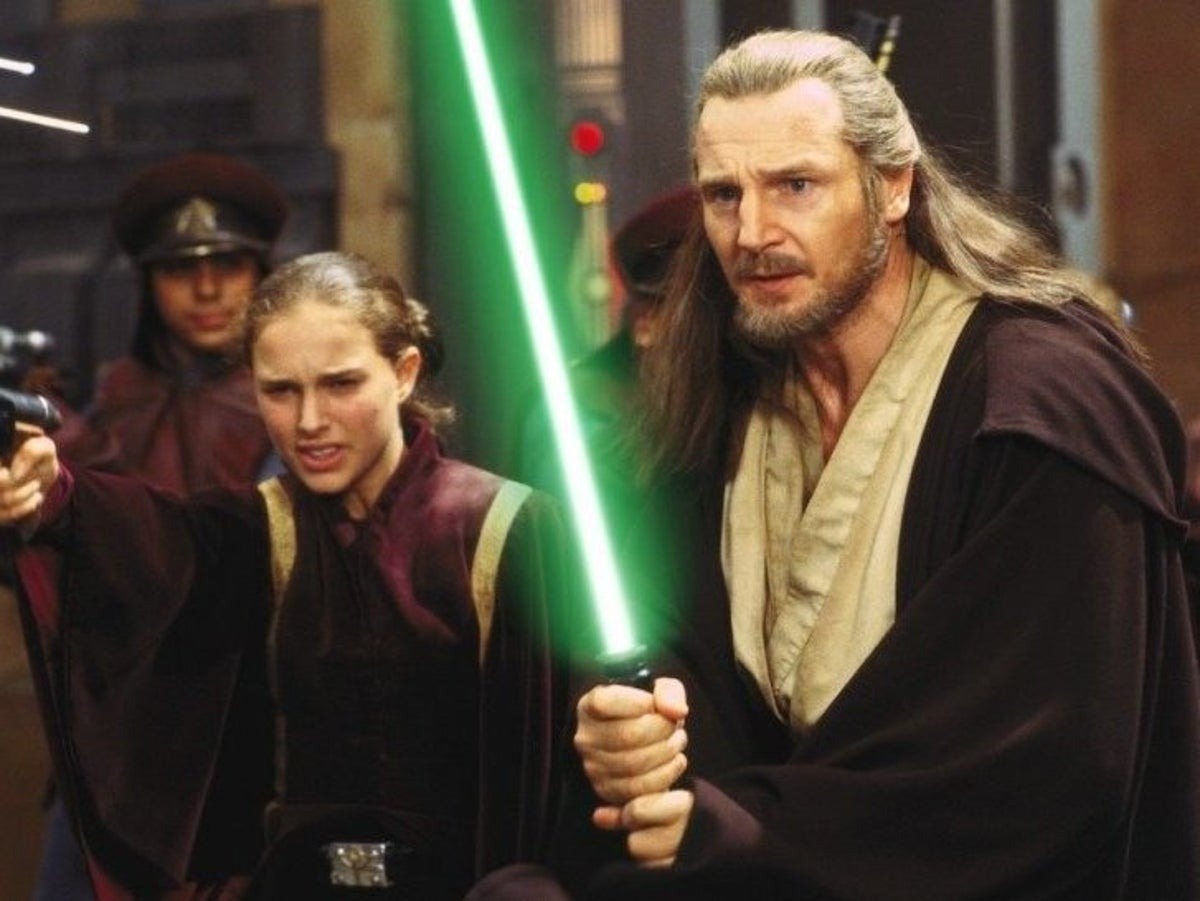No products in the cart.
News
The Phantom Menace Review: Exploring the Enduring Impact of Star Wars Episode I
In 1999, George Lucas unleashed “Star Wars Episode I: The Phantom Menace” upon the world. This film, if viewed in isolation, would be hailed as a visionary breakthrough in cinematic storytelling. However, being the fourth installment in the iconic “Star Wars” series, it faced the challenge of meeting the high expectations set by its predecessors. Many early reviews were lukewarm, criticizing the underdeveloped characters and excessive exposition. But let’s take a closer look at this film and explore the reasons behind its enduring impact.
Contents
- The Phantom Menace Review: Setting the Stage for a Galactic Saga
- The Visual Marvels of a Galaxy Far, Far Away
- A Space Opera for the Ages
- The Shaky Ground of Plot and Politics
- The Domestication of the Universe
- The Force Awakens: The Meeting of Qui-Gon and Anakin
- Emotional Resonance and Missed Opportunities
- The Dawn of a New Era in Filmmaking
- The Legacy of “The Phantom Menace”
- Conclusion
The Phantom Menace Review: Setting the Stage for a Galactic Saga
“The Phantom Menace” takes us back in time, serving as the first chapter in the “Star Wars” chronology. It introduces us to familiar characters like Obi-Wan Kenobi, Yoda, R2-D2, and C-3PO, but in their earlier, less developed forms. Anakin Skywalker, the central figure of the prequel trilogy, is introduced as a young and hopeful boy, unaware of the dark path that lies ahead. This film sets the stage for the epic saga that unfolds in subsequent installments.

The Visual Marvels of a Galaxy Far, Far Away
One of the most striking aspects of “The Phantom Menace” is its imaginative visual design. George Lucas and his team have created a visually stunning universe, filled with awe-inspiring locations and breathtaking special effects. From the underwater cities with their transparent membranes to the Senate chamber with its floating speakers, every scene is a feast for the eyes. The cities themselves are diverse and unique, ranging from Venetian-inspired canals to hothouse versions of ancient Rome. Lucas has truly pushed the boundaries of visual storytelling in this film.
A Space Opera for the Ages
While some critics lament the lack of character development and depth in “The Phantom Menace,” it’s important to remember that the “Star Wars” movies have always been space operas at heart. They captivate audiences with their energy, sense of fun, colorful inventions, and state-of-the-art special effects. The dialogue may be flat at times, but the focus is on visual storytelling rather than profound insights into human behavior. These films are meant to be experienced visually, with the stunning imagery taking precedence over dialogue.
The Shaky Ground of Plot and Politics
One criticism often leveled at “The Phantom Menace” is its convoluted plot, centered around embargoes and blockades. Some argue that these elements diminish the grandeur of the “Star Wars” universe and bring it down to the level of a 19th-century trade dispute. While the political maneuverings may not be the film’s strongest aspect, they serve as a backdrop for the more visually captivating moments. The stars may be mere pinpoints in the vastness of space, but the film’s true essence lies in its human mythology set against this intergalactic backdrop.

The Domestication of the Universe
Unlike the works of Stanley Kubrick, which often explore the humbling nature of the universe, Lucas presents a universe that is domesticated by man. His aliens, though visually distinct, often resemble humans in odd skins. Characters like Jar Jar Binks, a fully realized computer-animated alien, and Jabba the Hutt, who presides over the Podrace, add to the film’s colorful and whimsical atmosphere. Lucas may not delve deep into the philosophical aspects of space exploration, but he provides audiences with a sense of exhilaration and joy.
The Force Awakens: The Meeting of Qui-Gon and Anakin
One of the key turning points in “The Phantom Menace” is the first meeting between Qui-Gon Jinn and the young Anakin Skywalker. Qui-Gon senses that Anakin is destined for greatness, a pivotal figure in the galactic saga. Their encounter in a store, where Qui-Gon backs the young slave in a high-speed Podrace, serves as a thrilling moment in the film. The race itself is a highlight, with entrants zooming between high cliff walls, reminiscent of similar races in the original “Star Wars” trilogy. Qui-Gon’s belief in Anakin’s abilities adds depth to their relationship and foreshadows the events to come.
Emotional Resonance and Missed Opportunities
While “The Phantom Menace” may falter in its depiction of certain emotional moments, such as the scene where Anakin is told he must leave his mother, it still manages to tell a compelling story. The discovery and testing of Anakin’s abilities provide some of the film’s most engaging action sequences. Lucas creates a world where special effects and action set pieces take center stage, offering audiences a visual spectacle that compensates for any narrative shortcomings.

The Dawn of a New Era in Filmmaking
“The Phantom Menace” marks a significant turning point in the history of cinema. Through its use of digital techniques, it showcases the possibilities of unlimited creativity and boundless storytelling. Filmmakers are no longer limited by budgets or the physical constraints of practical effects. Lucas’ film is an early example of what the future holds for epic cinema. With the advancements in digital technology, filmmakers now have the freedom to bring their wildest imaginations to life on the big screen.
The Legacy of “The Phantom Menace”
Despite its mixed critical reception, “The Phantom Menace” has left an indelible mark on popular culture. It paved the way for the subsequent installments in the prequel trilogy and contributed to the overall “Star Wars” mythos. It introduced a new generation of fans to the galaxy far, far away and sparked renewed interest in the franchise. While it may not be a perfect film, its impact on cinema and its enduring popularity cannot be denied.
Conclusion
“Star Wars Episode I: The Phantom Menace” may have faced its fair share of criticism upon its release, but it remains a visionary achievement in imaginative filmmaking. Its stunning visuals, colorful characters, and epic action sequences continue to captivate audiences to this day. While it may not have reached the lofty heights set by its predecessors, it deserves recognition for pushing the boundaries of what is possible in cinematic storytelling. “The Phantom Menace” may have stumbled, but it ultimately set the stage for a new era in the “Star Wars” saga.

IDEAS & ADVICE
Is Thor Marvel Or DC? Unveiling The True Comic Book Universe Of The Mighty Thunder God
Explore the enigmatic origins of Thor, the Norse god of thunder, and uncover the truth [...]
Unveiling The Ultimate Showdown: Who Is Stronger Thor Or Captain Marvel?
Discover the ultimate power struggle in the Marvel Cinematic Universe with Thor and Captain Marvel. [...]
Is Wolverine An Anti Hero? Exploring The Complexities Of Marvel’s Iconic Character
Wolverine, also known as Logan, is one of the most complex and beloved characters in [...]
Does Wolverine Age? Unraveling The Mystery Of Wolverine’s Immortality
Wolverine, also known as Logan, is one of Marvel Comics’ most iconic characters, beloved for [...]
Is Hulk Hogan Married? Unveiling The Personal Life Of The Wrestling Icon
Looking for the latest updates on Hulk Hogan’s personal life? Wondering, “Is Hulk Hogan married?” [...]
Is Hulk Immortal? Exploring The Incredible Hulk’s Endurance And Longevity
The Hulk, one of Marvel’s most iconic characters, has long been a subject of fascination [...]
Who Plays Quicksilver In Avengers? Unraveling The Marvel Cinematic Universe’s Speedster
Quicksilver, the lightning-fast superhero from the Avengers, has been portrayed by various actors throughout the [...]
Silver Screen Speedster: What Movie Is Quicksilver In?
Quicksilver, the lightning-fast superhero from the Marvel universe, has made a significant impact not only [...]